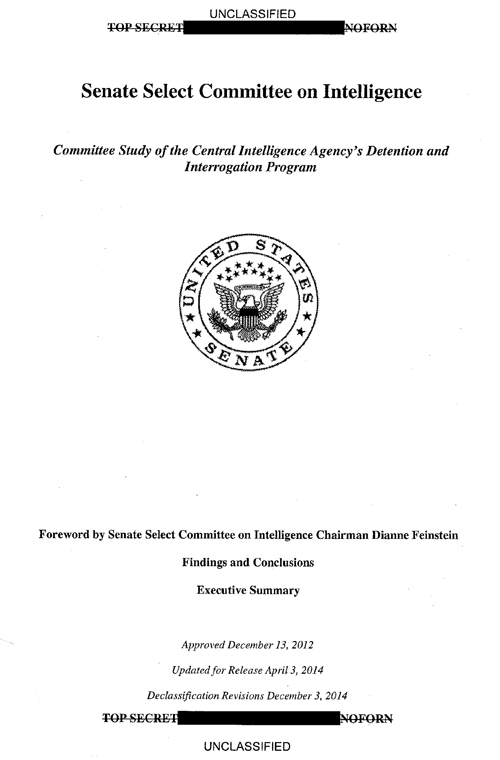
For more information, Tom Blanton 202.994.7000, nsarchiv@gwu.edu
CIA Torture Report -- Tom Blanton
The Colbert Report, December 10, 2014
Torture Report Revives Rogue Image the CIA Has Sought to Erase
By Terry Atlas and Jim Snyder, Bloomberg, December 11, 2014
"Torture Report" Released By Senate Committee
The Kojo Nnamdi Show, December 9, 2014
Please excuse us for the commercial before the video
Washington, D.C., December 9, 2014 – The Senate Select Committee on Intelligence today released the executive summary of its long-awaited "Study of the CIA's Detention and Interrogation Program," describing in more than 500 pages a dysfunctional agency so unprepared to handle suspected terrorist detainees after 9/11, that the CIA bought into private contractors' proposals for torture, and then lied to Congress, President Bush, the Justice Department, the public, and to itself about the purported effectiveness of the program.
The Senate release includes a 6-page foreword by committee chair Dianne Feinstein (D-CA), a 19-page list of 20 specific Findings and Conclusions, and a 499-page Executive Summary which details the development of the torture program after 9/11. The longest single section of the Summary, from page 172 to page 400, eviscerates the CIA's "eight primary CIA effectiveness representations" along with 12 "secondary" ones by showing either there was "no relationship" between the cited success and detainee information "during or after" the CIA's use of torture, or that such information was otherwise available and even obtained prior to the use of torture.
Including 2,725 footnotes to specific CIA documents, the Senate report shows a pattern of repeated factual inaccuracies by CIA in communications with the Justice Department (to get legal cover for the program), with the White House (including false information inserted in the President's Daily Brief and one of President Bush's major speeches), with the Congress (Appendix 3 starting on page 462 provides more than 30 pages of false statements in testimony by former CIA director Michael Hayden), and even inside the Agency itself.
The report cites CIA documents showing CIA officers at the secret detention sites repeatedly protested the torture program — one interrogator called the program a "train wreak" [sic] and wrote "I intend to get the hell off the train before it happens." But higher-ups, including CIA directors George Tenet, Porter Goss, and Hayden, overruled objections and kept the program going until President Obama ended it in 2009. The head of CIA counterterrorism operations, Jose Rodriguez, even reprimanded CIA officers at one site for their protests, warning them to refrain from using "speculative language as to the legality of given activities" in CIA cables.
Findings and Conclusions
Document
Executive Summary
Background and Overall History and Operation of the CIA's Detention and Interrogation Program
Part I and II
Intelligence Acquired and CIA Representations on the Effectiveness of the CIA's Enhanced Interrogation Techniques to Multiple Constituencies
Part III A-E
Part III F
Part III G
Overview of CIA Representations and Destruction of Videotapes
Part IV to X